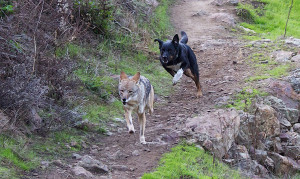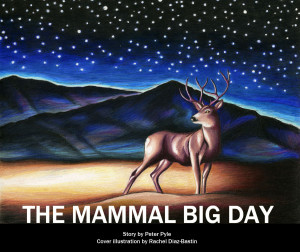Most of the world’s 5,000 or so species of mammals are already nocturnal, so the effect of urbanization on their circadian activity is probably nil. Actually, even the nocturnal animals are mostly crepuscular in activity; that is, they have a burst of feeding, moving, and mating at the twilight times—dawn and dusk.
I have noticed in park settings that our local black-tailed deer are active in the early morning, take it easy at midday, and then begin feeding again in the afternoon. Of course, they are active at night as well. In “shruburbia,” where homeowners, children, and dogs are out and about during the day, the deer tend to visit only under cover of darkness to munch those well-watered and delicious roses. So they have altered their diurnal (daytime) activity slightly.
A more obvious change in behavior is with coyotes. These wonderfully adaptive wild canines have different social strategies depending upon the habitats in which they live. In wide-open undisturbed settings, they form monogamous pairs and maintain an active social life with related clans. The offspring often stay with their parents for one or two years and help feed their newborn brothers and sisters. A mated pair may be together for years. They frequently hunt in the day and vocalize both night and day. Early settlers in the West reported seeing very large coyote aggregations (75 or more) in areas of abundant game.
However, in urban zones, or in areas that they are just colonizing, coyotes adopt entirely different lifestyles. They do not interact much with each other, and they don’t form long-lasting monogamous pairs. Often the mother coyote is left to feed the young kits all by herself, while the male keeps more or less to himself. Male territories are larger than the females’, and males may move through several territories before mating. In such uncertain and novel settings, and where humans are present, coyotes vocalize very little, if at all, and don’t move around much in the daytime. In other words, they keep a very low profile. In fact, human residents can be blissfully unaware of the presence of coyotes in the neighborhood until their beloved pet cat is snatched right off the back porch.




